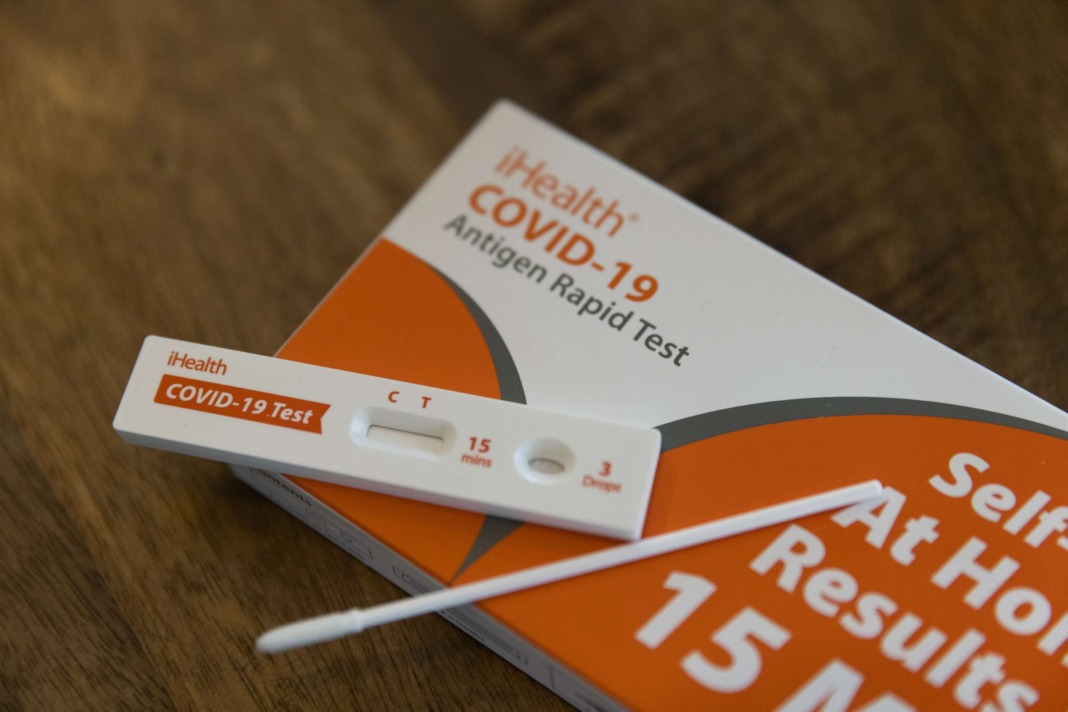In response to the recent surge in COVID-19 hospital admissions and emergency department visits, the United States government has expanded its at-home COVID-19 testing program, allowing households to order an additional four free COVID-19 tests per residence.
Starting Monday, residential households across the nation can place orders for four individual rapid antigen COVID-19 tests through Covidtests.gov. According to the United States Postal Service (USPS), these orders are set to begin shipping on November 27. For those without internet access, an alternative option is available by calling 1-800-232-0233 (TTY 1-888-720-7489) to request tests.
This initiative follows the government’s decision to temporarily suspend the rapid test distribution program in May, reopening it in September. Residents who haven’t placed an order since the program’s reopening can now place two orders, providing a total of eight tests, as confirmed by USPS.
These at-home COVID-19 tests, which can be taken irrespective of symptoms, are designed to be used at home and are effective through the end of the year. Despite expiration dates on some tests, the U.S. Food and Drug Administration (FDA) has extended their validity.
The U.S. Centers for Disease Control and Prevention (CDC) recommends testing for individuals experiencing COVID-19-like symptoms, such as a sore throat, runny nose, loss of smell or taste, or fever. Additionally, individuals planning to attend large events, especially if not up-to-date on vaccinations, are advised to take precautionary tests.
As COVID-19 hospital admissions and emergency department visits rise again after a brief downturn, the CDC reports that for the week ending November 11, over 16,200 people, constituting 1.4% of COVID-related emergency department visits, sought medical attention — figures consistent with rates seen in the past month.
While outpatient visits for flu-like illnesses are lower than this time last year, CDC data shows an increase compared to the previous four seasons. Flu activity is on the rise across the country, particularly in New Mexico, Florida, Alabama, Mississippi, Georgia, and South Carolina, where flu-like activity has been labeled as high. The CDC estimates over 780,000 flu illnesses, 8,000 hospitalizations, and 490 deaths so far this flu season.
To combat the flu, CDC data indicates that more than a third of adults and nearly a third of children have received their flu shots this year. Meanwhile, approximately 14% of adults, 5% of children, and 14% of older adults (ages 60 and up) have received the new COVID-19 vaccine, with 14% of older adults also receiving the new RSV vaccine.
As the winter season approaches, these efforts aim to curb the spread of respiratory viruses and alleviate the strain on the healthcare system, anticipating a similar number of hospitalizations as seen in the previous season. The government encourages individuals to take advantage of the at-home testing program to stay vigilant and prioritize public health.
In addition to the testing initiative, the CDC underscores the availability of antiviral medications to treat both COVID-19 and the flu. Testing plays a crucial role in determining the appropriate medication, and health officials emphasize the importance of early detection and treatment.
Despite the challenges posed by the ongoing pandemic and flu season, there is a glimmer of hope in vaccination rates. More than a third of adults and nearly a third of children have already received their flu shots, contributing to a robust defense against seasonal influenza. Additionally, about 14% of adults and 5% of children have received the new COVID-19 vaccine, marking progress in the ongoing vaccination efforts.
Looking ahead, as winter settles in and respiratory illnesses become more prevalent, the government’s expanded at-home testing program serves as a valuable tool in empowering individuals to take control of their health. By providing easy access to COVID-19 tests, the government aims to facilitate timely and efficient testing, ultimately contributing to the broader efforts to manage and mitigate the impact of both COVID-19 and the flu. As the nation navigates through these challenging times, the collaborative efforts of individuals, healthcare professionals, and public health agencies remain pivotal in overcoming the current health challenges and building a resilient future.



